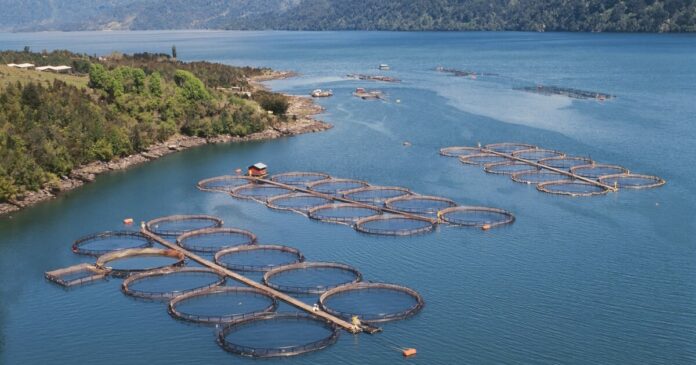The renowned seafood industry analysis specialist, Kontali, recently released its end-of-year trade data for the farmed salmon industry, providing valuable insights into the potential market trends for the early months of 2025. The analysis sheds light on the performance of key players in the industry, including Norway, Chile, and Iceland, offering a comprehensive overview of the global farmed salmon market.
In Norway, the data revealed a 6 percent year-over-year increase in export volumes for farmed salmon during the month of December. Additionally, the average annual export price per kilogram saw a slight uptick of just over 5 percent over the same period. However, despite these positive indicators, the overall export value remained relatively unchanged due to the nearly 6 percent depreciation of the NOK/EUR exchange rate. This aspect is crucial to consider when evaluating the industry’s performance in 2024 and projecting potential market trends for the upcoming year.
Moving on to Chile, the data highlighted a significant milestone in November 2024, with salmonid exports reaching their highest value of USD 617.4 million since the beginning of the year. This marked a notable 10 percent increase compared to the same period in 2023. The growth in exports and value was primarily driven by the robust production volumes of coho salmon, which typically peak during the months of November and January, as outlined by Kontali analysts.
During this period, the export value of coho salmon surged by 21 percent, while Atlantic salmon and trout also experienced moderate growth ranging between 5 and 6 percent. Despite stable volumes for Atlantic salmon and trout compared to 2023, at 61,200 and 4,100 tonnes respectively, coho volumes saw a 6.5 percent year-over-year increase to 35,200 tonnes, approaching record levels seen in 2022.
Interestingly, the distribution of Atlantic salmon exports in November 2024 differed from the previous year, with a 6 percent decline in exports to the US market. Meanwhile, exports to other markets fluctuated, with a notable 30 percent decline in the EU market and a remarkable 73 percent increase in exports to Russian markets. These shifting export patterns underscore the dynamic nature of the global farmed salmon market and the importance of monitoring geopolitical factors that impact trade dynamics.
In Iceland, the data revealed a positive trend in harvest volumes, with a 3 percent increase to 6,000 tonnes in November compared to the previous year. Furthermore, the average harvest weight showed significant improvement, reaching 5.6 kg and marking a 10-12 percent increase compared to 2023. These indicators point towards a favorable growth trajectory for Iceland’s farmed salmon industry, signaling potential opportunities for expansion and market development in the coming year.
Overall, the end-of-year trade data provided by Kontali offers valuable insights into the performance of key players in the global farmed salmon industry, including Norway, Chile, and Iceland. By analyzing export volumes, prices, and market dynamics, industry stakeholders can gain a comprehensive understanding of the trends shaping the market landscape and make informed decisions to navigate challenges and capitalize on opportunities in the evolving seafood industry.




